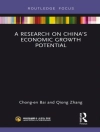There has been a resurgence of interest in light-induced water splitting as the search for storable carbon neutral energy becomes more urgent. Although the history of the basic idea dates back more than four decades, efficient, economical and stable integrated devices have yet to be realized. In the continuing quest for such devices, the field of photoelectrochemistry is entering a new phase where the extraordinary interdisciplinary of the research and development efforts are opening new avenues. This aspect of current research effort is reflected in the chapters of this book, which encompass present thinking in the various disciplines such as materials science, photo-electrochemistry and interfaces that can contribute to realization of viable solar fuel generators. This book presents a blend of the background science and recent advances in the field of photoelectrochemical water splitting, and includes aspects that point towards medium to long term future realization. The content of the book goes beyond the more traditional approaches to the subject by including topics such as novel excitation energy processes that have only been realized so far in advanced photonics. The comprehensive overview of current activities and development horizons provided by the impressive collection of internationally renowned authors therefore represents a unique reflection of current thinking regarding water splitting by light.
İçerik tablosu
Chapter 1 The Potential Contribution of Photoelectrochemistry in the Global Energy Future;
Chapter 2 Kinetics and Mechanisms of Light-Driven Reactions at Semiconductor Electrodes: Principles and Techniques;
Chapter 3: Structured Materuals for Photoelectrochemical Water Splitting;
Chapter 4: Tandem Photoelectrochemical Cells for Water Splitting;
Chapter 5: Particulate Oxynitrides for Photocatalytic Water Splitting under Visible Light;
Chapter 6: Rapid Screening Methods in the Discovery and Investigation of New Photocatalyst Compositions;
Chapter 7: Oxygen Evolution and Reduction Catalysts: Structural and Electronic Aspects of Transition Metal Based Compounds and Composites;
Chapter 8: The Group II-Nitride Materials Class: from Preparation to Perspectives in Photoelectrocatalysis;
Chapter 9: Epitaxial III-V Thin Film Absorbers: Preparation, Efficient In P Photocathodes and Routes to High Efficiency Tandem Structures;
Chapter 10: Photoelectrochemical Water Splitting: A First Principles Approach;
Chapter 11: Electro- and Photocatalytic Reduction of CO2: The Homogeneous and Hetereogeneous Worlds Collide?;
Chapter 12: Key Intermediates in the Hydrogenation and Electrochemical Reduction of CO2;
Chapter 13: Novel Approaches to Water Splitting by Solar Photons;
Chapter 14: Light Harvesting Strategies Inspired by Nature;
Chapter 15: Electronic Structure and Bonding of Water at Surfaces;
Chapter 16: New Perspectives and a Review of Progress












